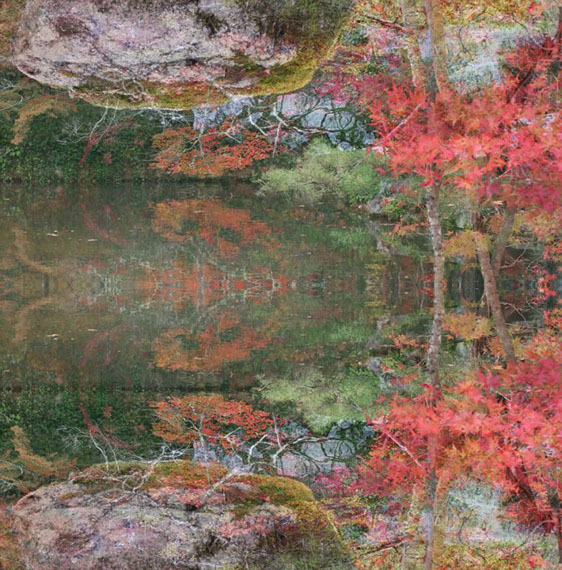
Ori Gersht »
floating world
Exhibition: 8 Sep – 31 Oct 2016
Noga Gallery of Contemporary Art
60 Ehad Ha'am St.
65202 Tel Aviv
+972 3 -5660123
nogaart@zahav.net.il
www.nogagallery.com
Mon-Thu 11-18 . Fri , Sat 11-14
Central to Gersht’s work is an examination of the evolving nature of the camera. Traditionally a device that recorded what was in front of it, it has now become something that creates our world rather than documents it. Since the digital revolution the speed of information transmission has compressed both time and space. We can now immediately see images of events as they are happening on the other side of the world, and the technology that makes this possible is now available to millions more people than ever before. This has profound implications for how we see and experience what is outside of us. Nothing remains fixed for long; everything is in flux. What is reality?
In November 2015 Gersht spent ten days in Japan visiting and photographing the Zen gardens located in and around Kyoto. Created to reflect the essence of nature, not its actual appearance, and as aids to meditation, these gardens are self-contained worlds within the wider world; places where time stands still. For Gersht they represented an alternative to our image saturated ‘world in flux’. Gersht chose particular places to photograph within the gardens where natural forms are reflected in water.
During the post-production process, in an attempt to perfectly integrate the reflection with the reflected objects – what he calls the virtual with the material – Gersht inverted and overlaid the photographs that he had made in Japan. The fused combinations created new spaces which hover between material and virtual realities. The resulting photographic prints are fundamentally dependent on something that exists in the physical world, but because of the melting together of tangible reality and its reflection, are not literal depictions of it. We are presented with the absence of the object of representation. The photograph becomes the thing that exists, an image of the folding of space and time.
In the photographs in the Floating World series, we are shown a new reality that is only available to us because of the mediation of the latest optical technology. At the same time, however, Gersht reminds us that our comprehension of this new reality depends on a continued relationship with both the natural world itself, and its reflection in art.�